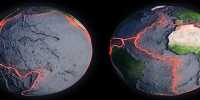According to a new study, triangular cities receive the least quantity of rain when compared to square or circular towns. The authors argue that how wind and weather interact with form in city environments should be taken into account when building future urban areas that must be more resilient to the effects of climate change. Floods in cities are becoming a greater issue as climate change, worsened by human activity, leads to an increase in the number of extreme weather occurrences. Because the large stretches of concrete jungle (where dreams are formed) have inadequate drainage, cities are particularly prone to phenomena like flash floods.
The first study of its sort into how urban rainfall differs from that experienced in inland and coastal regions was published in Earth’s Journal, and it looked at whether the form of a city may impact the weather. After discovering that several of Earth’s supposedly wetter cities, such as London, were also circular, the authors were motivated to investigate the impact of the form. They analyzed the findings of Weather Research and Forecasting models and eddy simulations of air currents in circular, square, and triangular cities (like Dallas, New York, and Los Angeles, respectively) to determine how the form may impact the weather. They also compared this to inland and coastal locations outside of cities.
The findings indicated that the impact of form is greatest in cities along the coast, where city air mixes with sea wind. Circular cities got the greatest rainfall, with 78.6 percent more than triangular cities. Rainfall volume and intensity indicated a rain-attracting-shapes order of circular > square > triangular, with triangular towns receiving the least and calmest variety of rain.
“Global cities have spent significant resources studying and implementing a range of infrastructures as adaptation techniques,” write the research authors, “with the idea that climate change may aggravate rainfall dangers in the future.” “Our findings reveal a hitherto underappreciated yet critical function of urban layout, particularly in coastal areas.” The circular city design depicts the dangers of heavy rain and subsequent flooding.”
The authors do acknowledge that the findings have limitations, and they want to address some of them by researching the influence of city design under a range of wind conditions in the future. For the time being, they conclude that the study provides food for thought in terms of how we may handle certain sustainability challenges while creating our urban settings. “This research is the first to look into the effect of city design on urban rainfall in both inland and coastal areas… The findings are important for city development that is both sustainable and resilient, especially for those that are expanding.”














